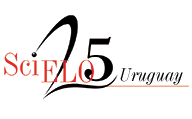Arte, estética y robots
para una filosofía de la interacción
DOI:
https://doi.org/10.25185/10.7Palabras clave:
Interacción, Arte interactivo, Arte robótico, Estética, FunciónResumen
El concepto de interacción es clave para el desarrollo contemporáneo de la robótica social. Se discute, sin embargo, la conveniencia de una definición que atienda los éxitos de programación del robot y amenace con menoscabar su integración como dimensión elemental de la naturaleza humana. Conforme a una definición proveniente de la filosofía analítica, en la que no se devalúa el horizonte definitivamente humano del concepto de interacción, se realiza un rastreo del arte robótico como territorio de experimentación inocuo en el que se aplica la normativa estética, con independencia, por lo tanto, de otros intereses relacionados con la utilidad o la aplicación industrial. Se presta atención particular sobre aquellos casos orientados a la interacción máquina/humano, y se aplica, finalmente, una jerarquía de niveles de interacción a la que sigue una serie de conclusiones provisionales.
Descargas
Citas
Benthall, Jonathan. Science and Technology in Art Today. New York: Praeger Publishers, 1972.
Brooks, Rodney. Cuerpos y máquinas. De los robots humanos a los hombres robots. Barcelona: Ediciones B, 2003.
Burnham, Jack. “Art and Technology: The Panacea that Failed”. En The Myths of Information: Technology and Postindustrial Culture, editado por Kathleen Woodward, 200-215. Madison: Coda Press, 1980.
Burnham, Jack. Beyond Modern Sculpture. The Effects of Science and Technology on the Sculpture of this Century. New York: George Braziller, 1968.
Dautenhahn, Kerstin. “Embodiment and Interaction in Socially Intelligente Life-Like Agents”. En Computation for Metaphors, Analogy, and Agentes, editado por Chrystopher L. Nehaniv, 102-141. Berlin: Springer-Verlag, 1999. DOI: https://doi.org/10.1007/3-540-48834-0_7
Giannetti, Claudia. “Arte humano/máquina. Virtualización, interactividad y control”. En Arte, cuerpo, tecnología. Editado por Domingo Hernández Sánchez, 211-221. Salamanca: Ediciones Universidad de Salamanca, 2003.
Giannetti, Claudia. Estética digital. Sintopía del arte, la ciencia y la tecnología. Barcelona: Associació de Cultura Contemporània L’Angelot, 2002.
Hegel, Georg W. F. Lecciones sobre la Estética. Traducido por Alfredo Brotons Muñoz. Madrid: Akal, 2007.
Inhatowicz, Edward. Cybernetic Art: a personal statement. Londres: autopublicación, 1986.
Jones, Caroline A. “Cybercultural Servomechanisms: Modeling Feedback around 1968”. En Art in the Age of the Internet: 1989 to today, editado por Eva Respini, 42-49. Boston: ICA, 2018.
Julia, Luc. L’intelligence artificielle n’existe pas. Paris: Éditions First, 2019.
Kand, Takayuki & Ishiguro, Hiroshi. Human-Robot Interaction in Social Robotics. Boca Raton: CRC Press, 2013.
Klütsch, Christoph. “The summer 1968 in London and Zagreb: starting or end point for computer art?”. En C&C ‘05: Proceedings of the 5th conference on Creativity & Cognition, 109-117. New York: Association for Computing Machinery, 2005.
Krauss, Rosalind E. Passages in Modern Sculpture. New York: The Viking Press, 1977.
Krueger, Myron W. “Responsive Environments”. Proceedings of AFIPTS National Computer Conference 46 (1977): 423-433.
Krueger, Myron W. “VIDEOPLACE: A Report from the ARTIFICIAL REALITY LAboratory”. Leonardo 18, nº 3 (1985): 145-151.
Krueger, Myron W. Artificial Reality, Reading: Addison-Wesley, 1983.
Kwastek, Katja. “The Invention of Interactive Art”. En Artists as Inventors, Inventors as Artists, editado por Dieter Daniels y Barbara U. Schmidt, 182-193. Berlin: Hatje Cantz, 2013.
Kwastek, Katja. Aesthetics of Interaction in Digital Art. Cambridge: The MIT Press, 2013.
Magrini, Boris. Confronting the machine. An enquiry into the subversive drives of computer-generated art. Berlin: De Gruyter, 2017.
Marcos, Alfredo. “Información e inteligencia artificial”. Ápeiron. Estudios de Filosofía 12 (2020): 73-82.
Marcos, Alfredo. “La inteligencia artificial y el efecto Toy Story”. Proyecto SCIO Red de investigaciones filosóficas José Sanmartín Esplugues. Acceso el 20 de abril, 2021. https://proyectoscio.ucv.es/actualidad/la-inteligencia-artificial-y-el-efecto-toy-story-por-a-marcos/
Metzger, Gustav. “Automata in History”. Studio International 177, nº 907 (1969): 107-109.
Michie, Donald y Rory Joohnston. The creative computer. Machine intelligence and human knowledge. Middlesex: Penguin Books, 1984.
Parsons, Glenn, y Allen Carlson. Functional Beauty. Oxford: Oxford University Press, 2008.
Penny, Simon. “Robotics and Art, Computationalism and Embodiment”. En Robots and Art. Exploring and Unlikely Symbiosis, editado por Damith Herath, Christian Kroos y Stelarc, 47-65. Singapore: Springer, 2016. DOI: https://doi.org/10.1007/978-981-10-0321-9_4
Pradier, Adrián. “Robótica, estética y antropología: problematizando el diseño antropomórfico”. En Hombre y lógos. Antropología y comunicación, coordinado por José Manuel Chillón, Ángel Martínez y Pablo Frontel, 305-319. Valladolid: Fragua, 2019.
Reichardt, Jasia, ed. Cybernetic Serendipity: the computer and the arts. A Studio International special issue. London: Studio International, 1968.
Reichardt, Jasia, ed. Cybernetics, Art and Ideas. London: Studio Vista, 1971.
Reichardt, Jasia. “Art at large”. New Scientist 54, nº 794 (1972): 292.
Reichardt, Jasia. Robots: Fact, Fiction and Prediction. London: Penguin Books, 1978.
Rhee, Jennifer. The Robotic Imaginary. The Human and the Price of Dehumanized Labor. Minneapolis: University of Minnesota Press, 2018.
Smuts, Aaron. “What is Interactivity?”, The Journal of Aesthetic Education 43, nº 4 (2009): 53-73.
Stern, Nathaniel. Interactive Art and Embodiment. The Implicit Body as Performance. Canterbury: Gylphi, 2013.
Usselmann, Rainer. “The dilemma of Media Art: Cybernetic Serendipity at the ICA London”. Leonardo 36, nº 5 (2003): 389-396.
Venturelli, Nicolás A. “Historia y epistemología de la cibernética temprana: el caso del homeostato”. Revista Argentina de Ciencias del Comportamiento 8, nº 2 (2016): 124-133.
Walter, William Grey. “An Imitation of Life”. Scientific American 182, nº 5 (1950): 42-45.
Wilson, Stephen. Information Arts. Intersections of Art, Science, and Technology. Cambridge: The MIT Press, 2002.
Zivanovic, Aleksander, y Stephen Boyd Davis. “Elegant motion: The Senster and other cybernetic sculptures by Edward Ihnatowicz”, Kybernetes 40, nº 1/2 (2011): 47-62.
Zivanovic, Alexander. “SAM, The Senster and The Bandit: Early Cybernetic Sculptures by Edward Ihnatowicz”. En Proceedings of the Symposium of the Robotics, Mechatronics and Animatronics in the Creative and Entertainment Industries and Arts. Hatfield: Society for the Study of Artificial Intelligence and the Sitmulation of Behaviour, 2005.
Publicado
Cómo citar
Número
Sección
Licencia
Derechos de autor 2021 Adrián Pradier

Esta obra está bajo una licencia internacional Creative Commons Atribución 4.0.




























 Esta obra está bajo una licencia de
Esta obra está bajo una licencia de 